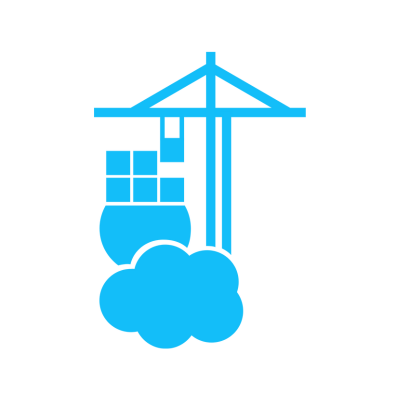IoT devices are everywhere, from factory floors to smart hospitals, with an estimated 42 billion devices expected by 2025, generating nearly 80 zettabytes of data. Managing these workloads with Kubernetes sounds great, but standard Kubernetes clusters can be overkill for resource-constrained IoT environments. Consider lightweight Kubernetes distributions such as K3s, MicroK8, and k0s. These solutions simplify deployment but still require a simple way to manage and protect workflows. That is where Portainer comes in.
Portainer simplifies containerized workload management, even in resource-constrained environments. Whether you're working with edge computing nodes, industrial IoT, or remote sensors, Portainer makes workload deployment and security smoother. It facilitates system monitoring without the hassles of full-scale Kubernetes management.
In this blog post, let’s explore the challenges of running IoT workloads on Kubernetes, why lightweight Kubernetes clusters are a game-changer, and ten ways Portainer makes IoT workload management easier.
5 Challenges of running IoT workloads on Kubernetes
Managing IoT workloads on Kubernetes presents several challenges:
- Resource Limitations: Traditional Kubernetes deployments can be burdensome for IoT devices, which generally have low CPU and memory capacities
- Network Latency: Many IoT devices use edge computing instead of depending on cloud-based clusters, which requires low-latency processing
- Security Risks: IoT devices often have weak security, which leaves them vulnerable to cyberattacks
- Scaling Complexity: IoT networks always expand, requiring workload and application scaling automation
- Remote Management: Many IoT deployments are in remote areas with little access to updates and maintenance
Lightweight Kubernetes distributions address some of these issues, but effective management requires the right tools.
Benefits of lightweight Kubernetes clusters for IoT
Lightweight Kubernetes deployments, such as K3s, MicroK8s, and K0s, are made for resource-constrained environments. Here's why they're effective with IoT:
- Lower resource usage: These clusters are perfect for edge devices because they consume fewer system resources
- Simplified deployment: Lightweight clusters require fewer configurations and install more quickly than standard Kubernetes
- Faster boot times: In a failure, IoT nodes must resume immediately. Lightweight Kubernetes clusters guarantee faster recovery
- Optimized for edge computing: They facilitate offline operation and low-latency processing, two critical functions for the Internet of Things
But even thin clusters require maintenance, which is where Portainer can help.
How Portainer simplifies IoT workload management
Portainer is a great choice for IoT environments because it provides an easy approach to deploying, managing, and securing Kubernetes workloads. Here are the 10 ways to manage IoT workloads on lightweight Kubernetes clusters with Portainer:
1. Deploy lightweight Kubernetes clusters with ease
Setting up K3s, MicroK8s, or K0s can get complicated, especially for distributed IoT environments. Portainer’s intuitive UI removes the complexity, guiding you through cluster creation and connection step by step.
2. Manage multiple clusters from one dashboard
IoT systems often span multiple remote clusters. Instead of juggling separate setups, Portainer offers centralized management, letting you monitor and control all clusters through a single interface.
3. Simplify IoT app deployment
Deploying IoT applications across clusters can be tedious. Portainer streamlines this with easy drag-and-drop deployments, YAML support, and Helm chart integration so you can deploy consistently across environments.
4. Automate Scaling for IoT Devices and Nodes
IoT workloads fluctuate, and manually managing scaling can be inefficient. Portainer helps you automate scaling, optimize resource allocation, and balance workloads to handle spikes and prevent bottlenecks.
5. Enforce role-based access control (RBAC)
Security is non-negotiable for IoT. Portainer’s RBAC features let you define user roles and permissions, ensuring only authorized personnel can access and modify workloads.
6. Manage edge deployments remotely
IoT devices often operate in remote or bandwidth-limited locations. Portainer’s Edge Agent lets you deploy, update, and monitor workloads on edge devices, even with intermittent connectivity.
7. Monitor and log IoT workloads
IoT systems generate vast amounts of data. Portainer integrates with monitoring tools, giving you visibility into resource usage, logs, and performance metrics without flooding your network with unnecessary data.
8. Secure secrets management
Hardcoded credentials are a security risk. Portainer makes secrets management straightforward, letting you securely store and inject sensitive data like API keys and passwords into your IoT workloads.
9. Enable CI/CD for seamless updates
IoT applications often require frequent updates. Portainer integrates with CI/CD pipelines (like GitOps), automating deployments so you can roll out changes, patches, or new features quickly and reliably.
10. Leverage no-code/low-code features
Not every IoT engineer is a Kubernetes expert. Portainer’s no-code/low-code UI makes cluster management accessible so teams can deploy and manage workloads without deep knowledge of Kubernetes.
Best practices for security and monitoring in IoT deployments on Kubernetes
IoT environments present unique security and monitoring challenges. The following best practices can help you maintain the security and efficiency of your workloads:
- Apply least privilege access: Use least privilege access to limit who can make modifications and restrict access
- Secure communication: Enforce TLS encryption between Kubernetes nodes and IoT devices
- Monitor in real time: Track performance, identify anomalies, and view logs using Prometheus and Grafana with Portainer
- Automate patching: Keep IoT workloads secure by automatically updating and patching vulnerabilities
- Isolate workloads: Using network policies to divide workloads and prevent unauthorized access
Portainer simplifies the implementation of these best practices by reducing the need for manual intervention.
Real-world applications of IoT and Kubernetes
Industries worldwide use IoT and Kubernetes to boost efficiency, security, and scalability. Here are a few instances:
- Manufacturing
Manufacturing facilities use IoT sensors to monitor the condition of their machinery, anticipate maintenance needs, and maximize output. Portainer facilitates the management of edge nodes that process data in real time when running K3s clusters.
- Healthcare
Hospitals use IoT devices for telemedicine, asset tracking, and patient monitoring. Lightweight Kubernetes ensures low-latency processing at the edge, while Portainer simplifies deployment across numerous sites.
- Smart cities
IoT-enabled traffic control systems, smart grids, and environmental monitoring necessitate consistent real-time data processing. Portainer offers centralized control over certain workloads, while Kubernetes handles them at the edge.
Streamline, secure, and scale IoT deployments with Portainer
Managing IoT workloads on Kubernetes does not have to be a challenge. By utilizing lightweight Kubernetes clusters with Portainer, teams can improve security, expedite remote administration, and simplify deployment.
From RBAC-based security to automated scaling, Portainer simplifies Kubernetes, making it usable even for IoT engineers who lack an extensive understanding of the platform.
Portainer is the solution you've been searching for if you're working with IoT deployments and need a simple approach to managing Kubernetes workloads. Are you ready to streamline Kubernetes management for IoT? Try out Portainer now!







